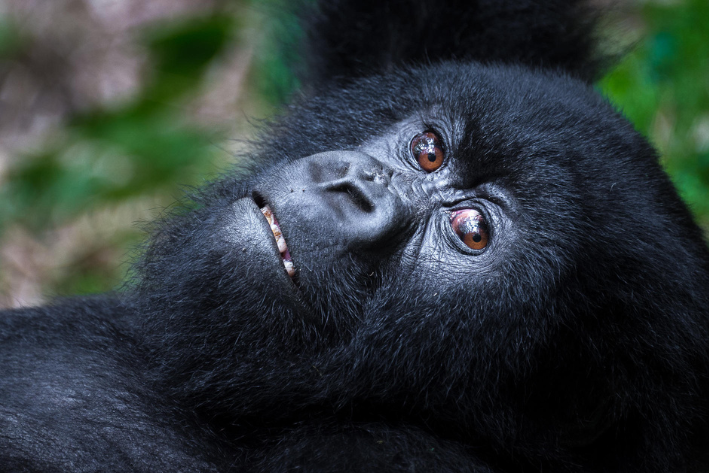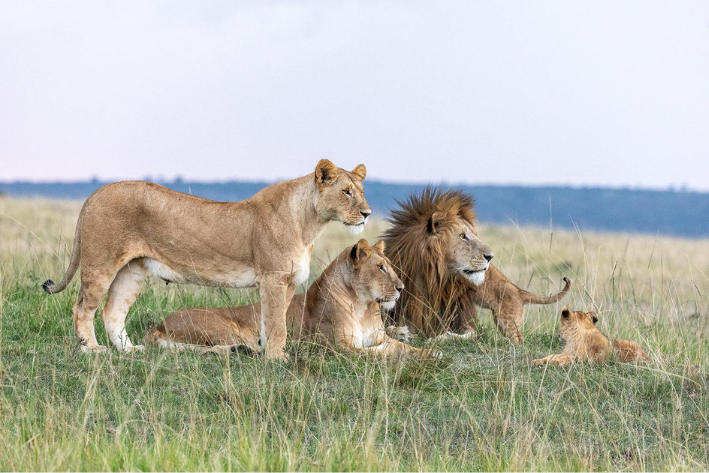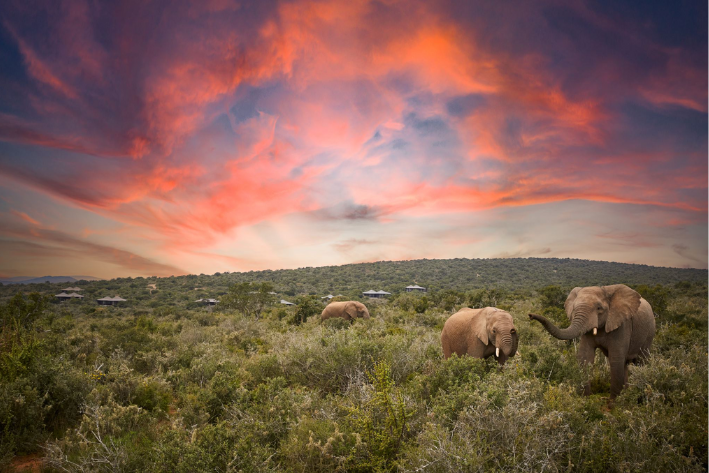A Guide to the Great Migration
East Africa's Great Wildebeest Migration
A luxury safari to Tanzania and Kenya is a bucket list experience everyone should be privileged enough to have. The Great Migration between the Serengeti National Park in Tanzania and the Masai Mara in Kenya is a phenomenon that is well known worldwide.
Here, we’ll share our guide to give you the best migration safari experience possible, including where to be, when to be there, what to expect, and where to stay.
This article was also featured on the African Safari Mag, which can be read here.
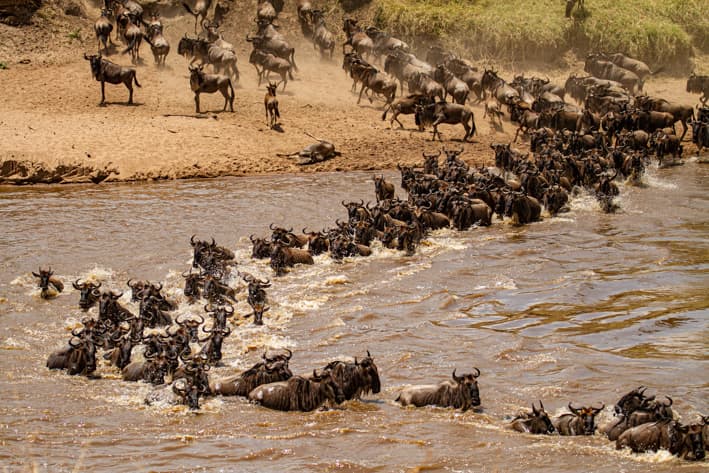
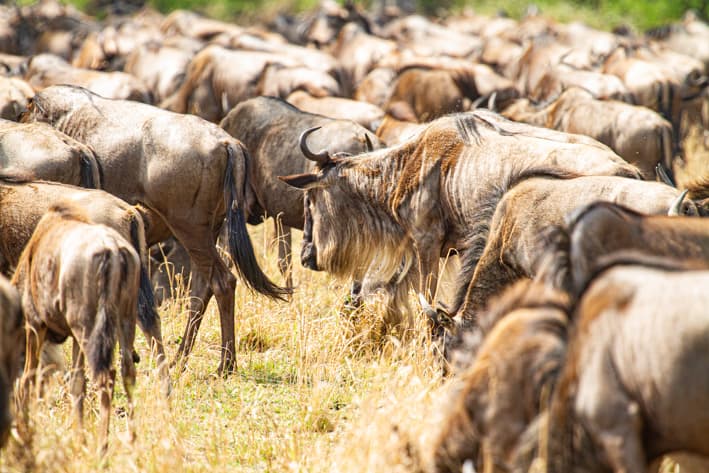
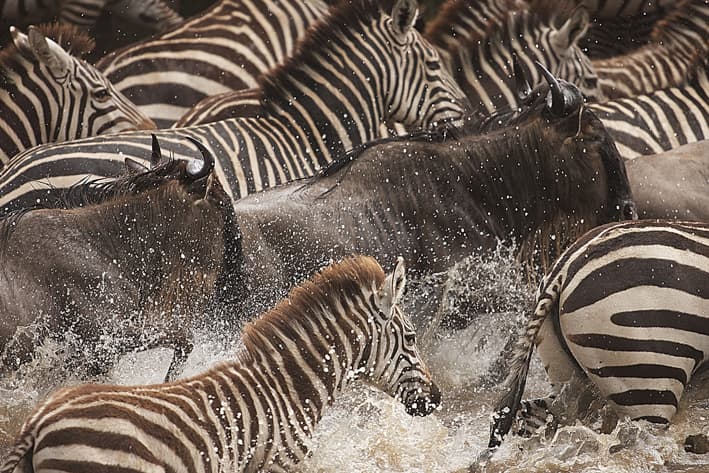
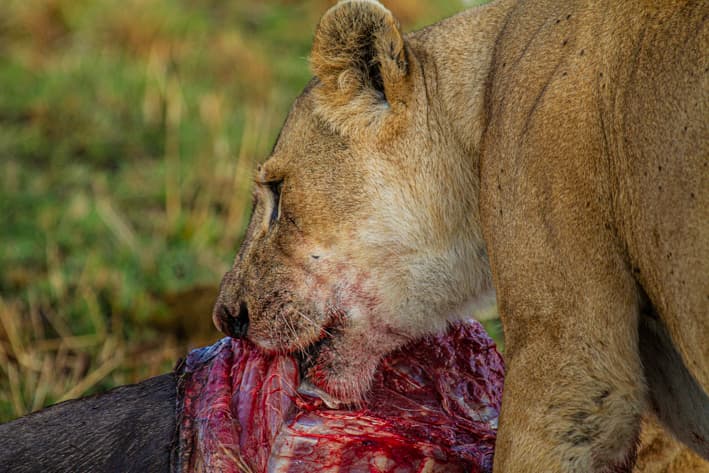
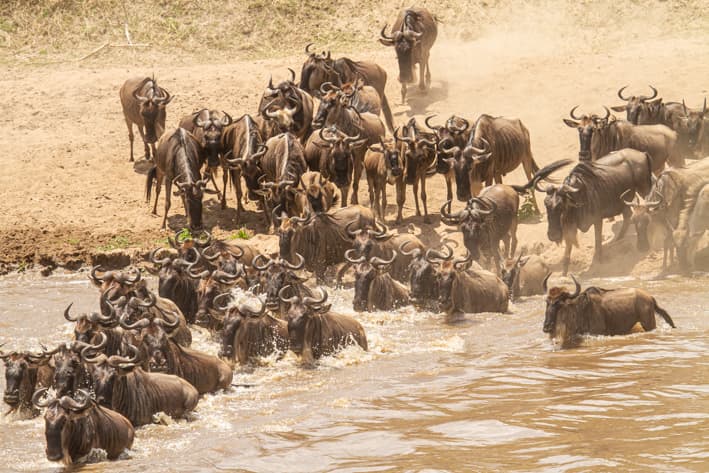
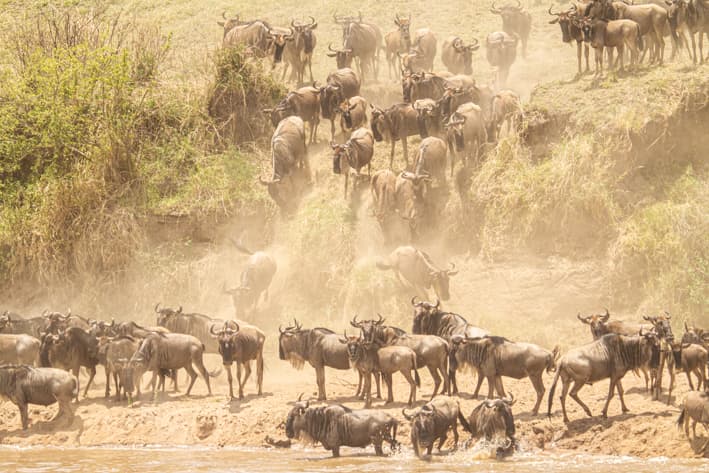
The Migration during February and March
At this time of year, the herds, including hundreds of thousands of wildebeest, zebra and gazelle, can be found in the Ndutu plains in the south of the Serengeti National Park, giving birth. Birthing happens in a 2 week period. Why so quick? Such a short window allows the calves safety in numbers. Within minutes, new-borns are on their own 4 legs and moving around. They need to be mobile as quickly as possible because plenty of predators wait in eager anticipation for the easy meals that calves can provide. As soon as the babies are ready, the herd heads north in search of better grazing.
If you plan on visiting the Serengeti during birthing season, some of our favourite accommodation includes Songa Migrational Camp, a mobile safari that follows the herd north, and Serengeti Safari Camp, a luxury tented camp with excellent guides who know exactly where to take you to get the best game viewing opportunities. There’s also Serian’s Serengeti South, another mobile camp offering a range of activities, like game drives, walking safaris, and even “fly-camping” for the adventurous visitor – sleeping underneath the stars with nothing more than flysheet, the way that we used to before the invention of glamping.
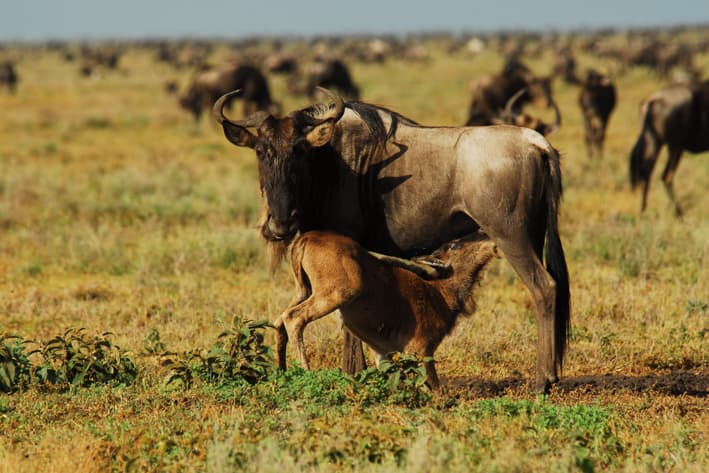
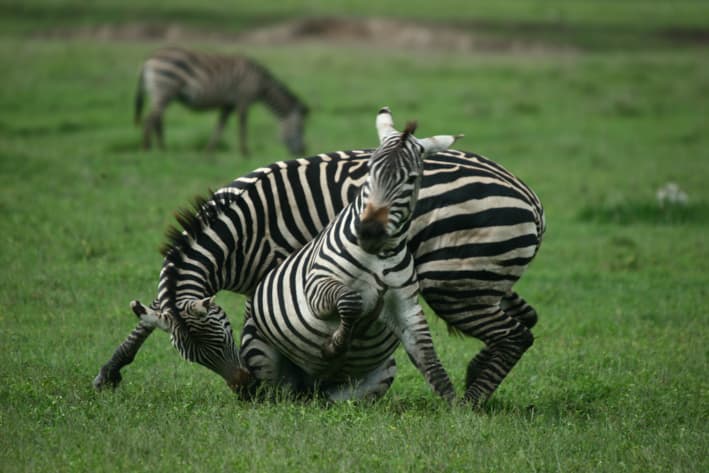
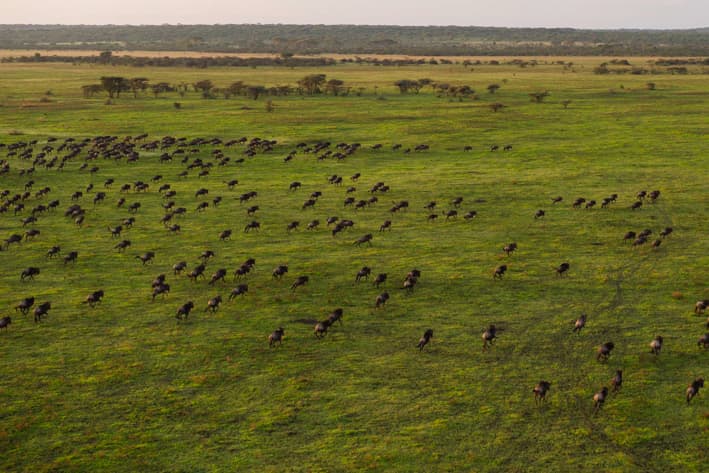
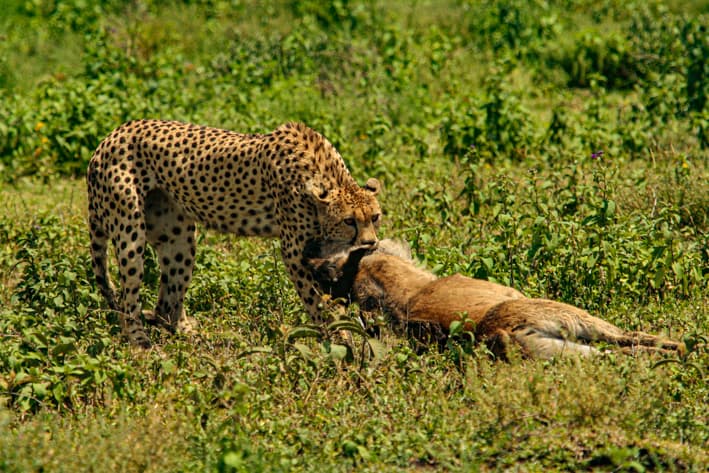
The Migration during April and May
April/May is the rainy season in the Serengeti and sees the giant herd, now numbering about 2 million, crossing the central Seronera and Grumeti regions of the Tanzanian park. Because of the heavy rains, tourism at this time is relatively low, and so if you’re not keen on crowds, April/May might be a good time to plan your safari to Tanzania. May is the beginning of the mating season, so if you’re brave enough to face the rains, visitors will see a lot of head to head battles between the young males looking for a mate.
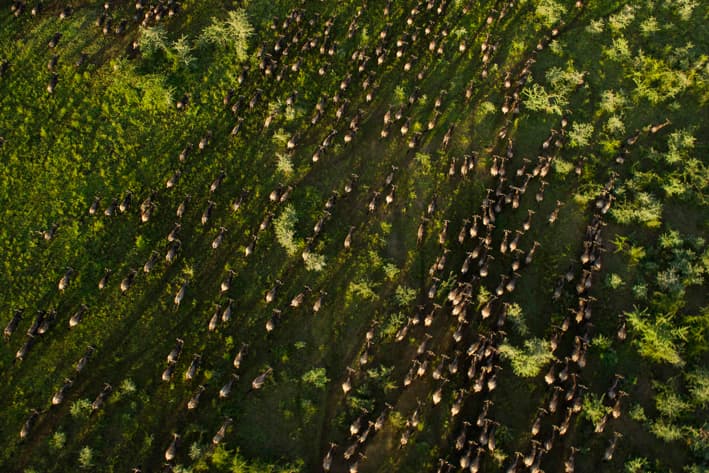

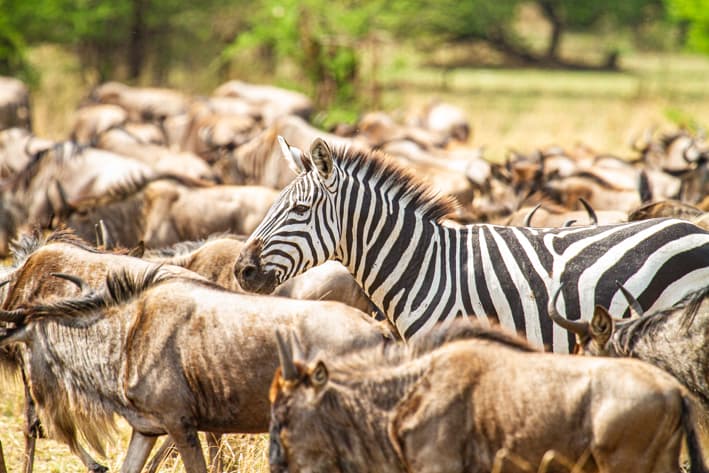
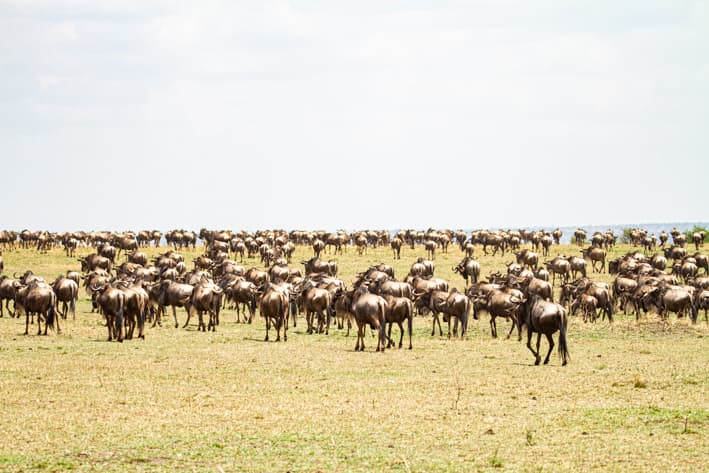
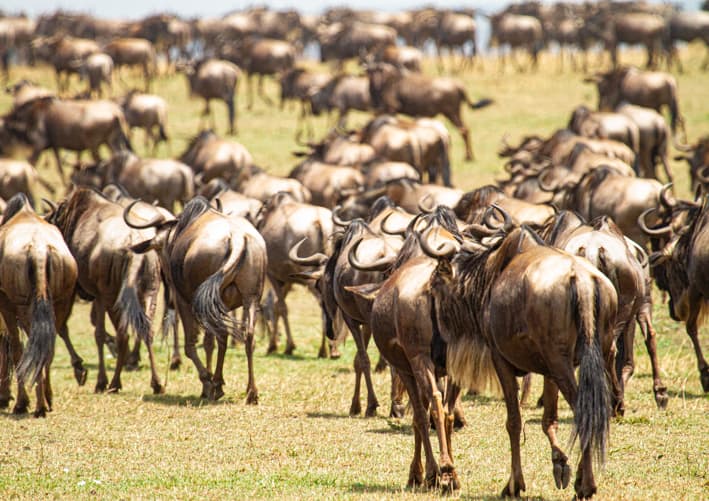
The Migration in June
By the time June approaches, most of the herd has congregated against the banks of the Grumeti River, ready to make the fearful crossing towards the northern section of the Serengeti, through the croc infested waters. The animals make a wild dash through the strong waters, creating a feasting time for crocodiles.
Some of our favourite camps in the Grumeti area include Mila Tented Camp and the Singita Faru Faru Lodge. Mila Tented Camp is smaller, with just 7 rooms. Singita Faru Faru Lodge is a little bigger, offering 9 rooms and a large variety of amenities, including a gym, swimming pool and spa.
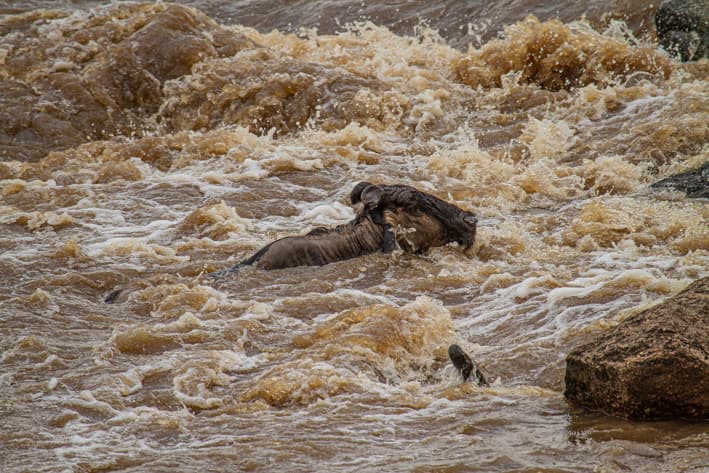
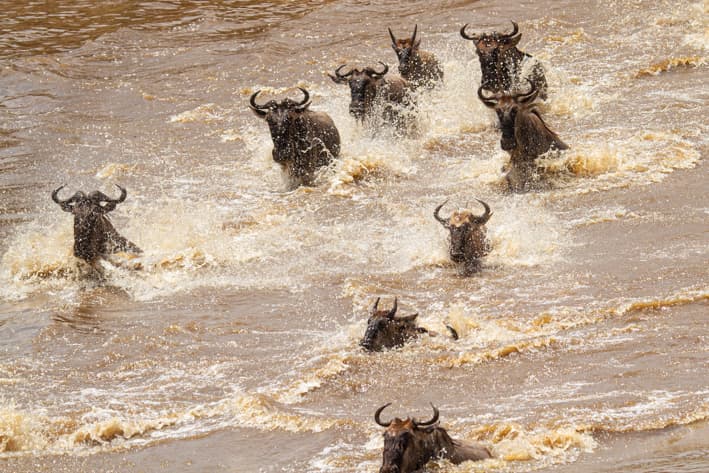
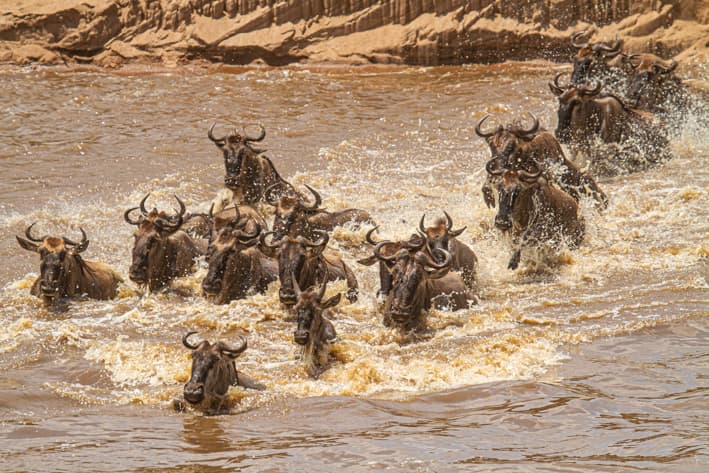
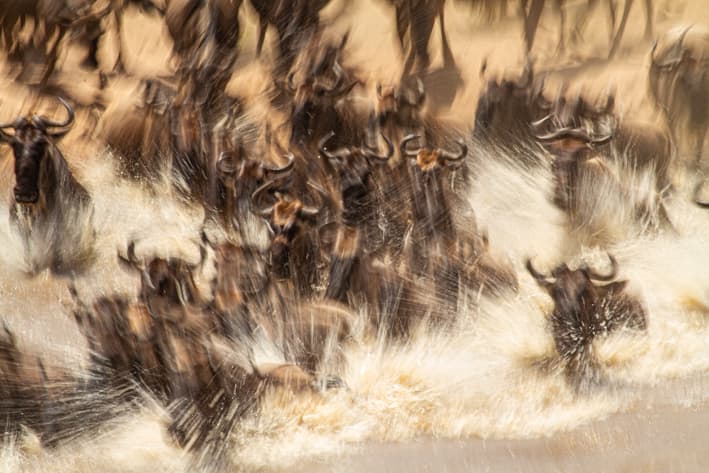
The Migration in July and August
In July, the herd is in the north of the Serengeti. This area is considerably quieter than the bustling south, and so for a more exclusive safari experience, July is a good time to see the migration. By the end of July, the herd is ready to cross into the Masai Mara. Late July and August sees the animals braving the Mara and Talek rivers. It’s not an easy journey – the currents are strong and many animals drown, while others are eaten by the massive Nile crocodiles (getting over 4m in length) that inhabit the rivers. The crossing is an incredible sight to see, but definitely not for the faint of heart. Between the strong currents and the crocodiles, about 250 000 wildebeest will die during the migration each year.
For accommodation in the Mara River vicinity, there’s Songa Migrational Camp and Serengeti Safari Camp (now in the north of the park). We also love Lamai Serengeti, a tented camp perched on a hill, offering excellent viewing opportunities right from the comfort of the lodge, as well as Serian’s Serengeti Mobile Lamai, a small camp with only 6 rooms, that offers secluded accommodation perfect for exclusive bookings.
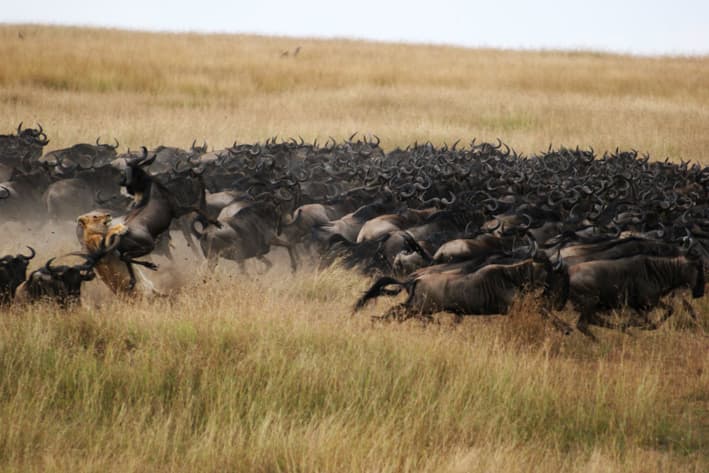
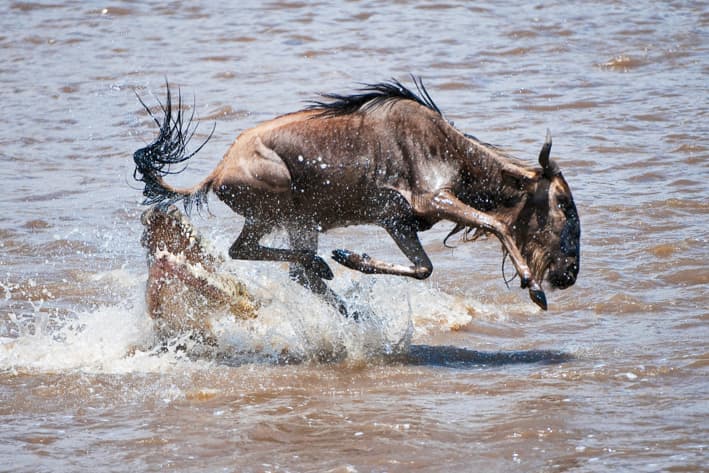
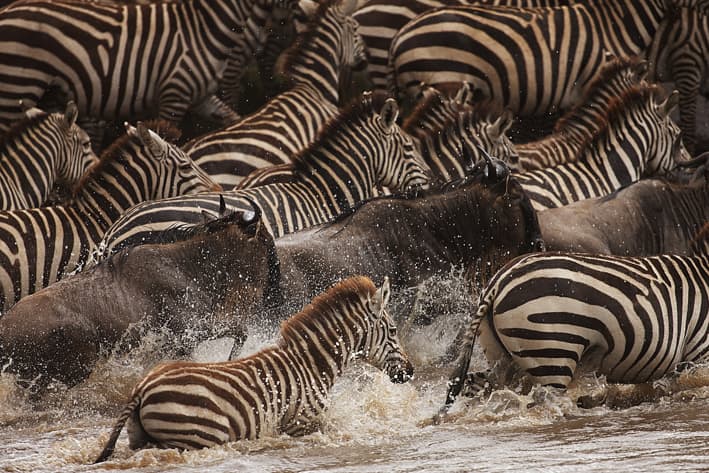
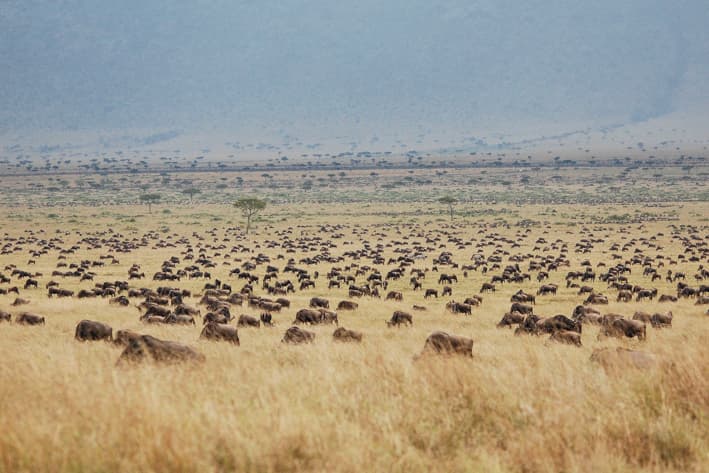
The Migration in September and October
At this time of year, the best place to safari is in the Masai Mara Reserve in Kenya. Most of the herd can be seen on the grass plains of the Masai Mara, enjoying the plentiful grazing they have worked so hard to access. Masai Mara is a much smaller park than the Serengeti, and so keep in mind that things will get more crowded than in the south. Towards the end October, the herd is ready to make their long trip south again.
In the Masai Mara, some of our favourite accommodation includes Naibor Camp, secluded luxury tented accommodation on the banks of the Talek River in a quiet part of the bustling Masai Mara. We also like Sala’s Camp. This camp is located in the very south of the park, offering prime location and beautiful views into the Serengeti on the other side of the border.
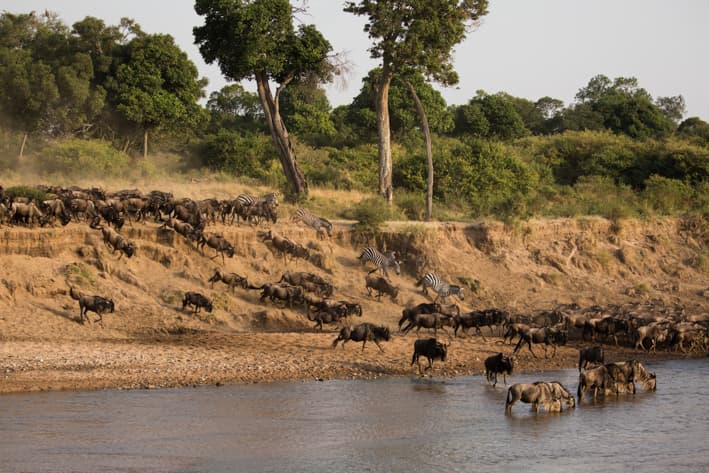
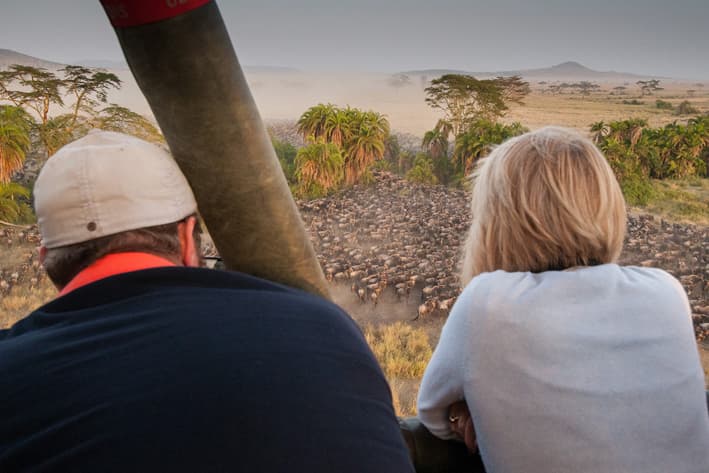
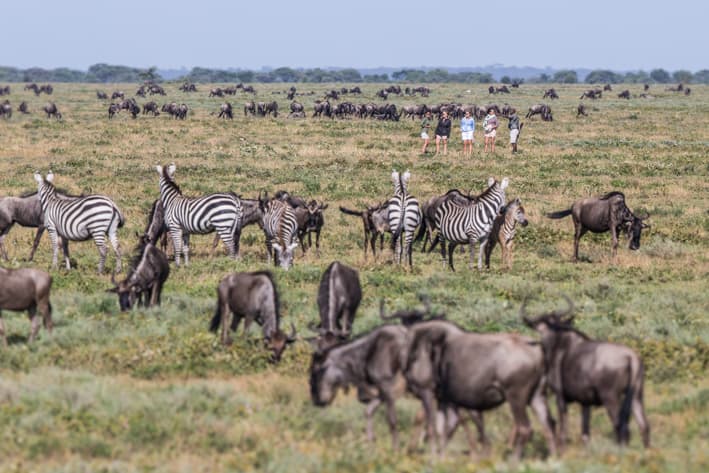
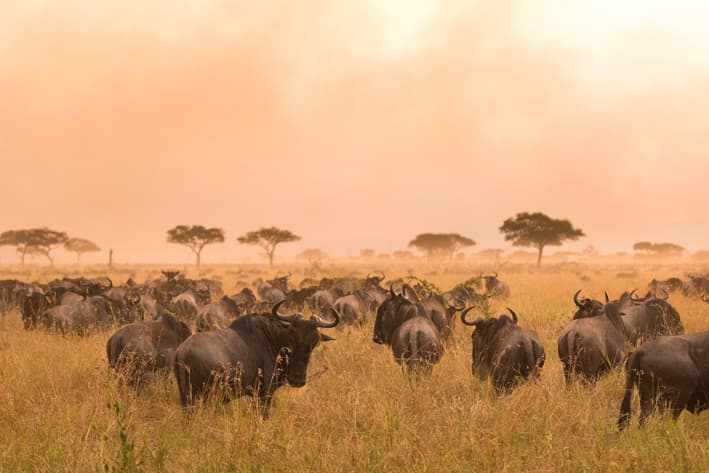
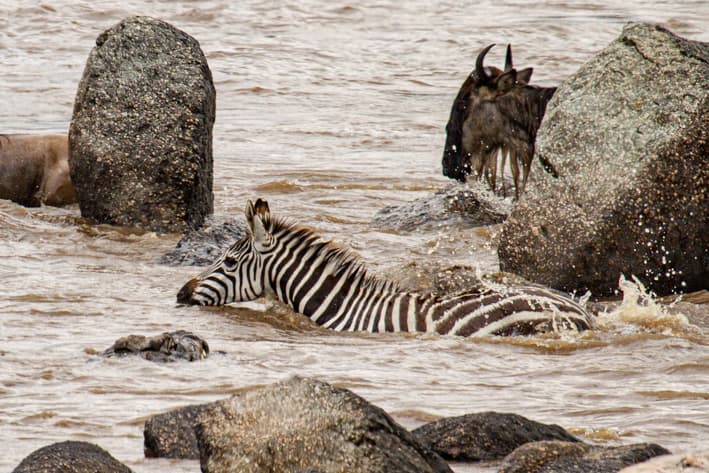
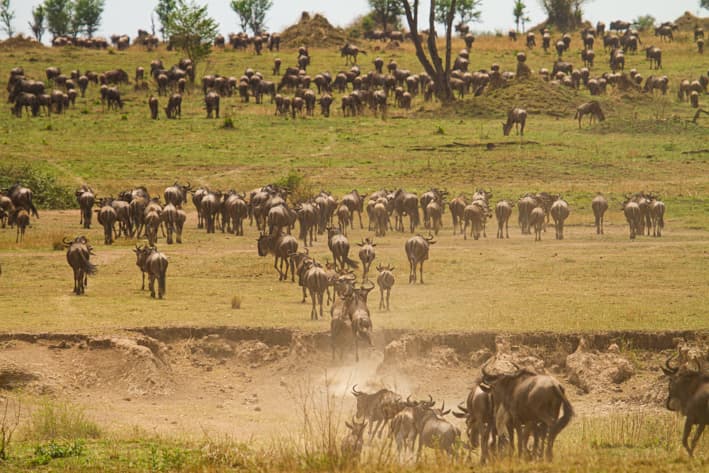
The Migration in November
November sees the herd moving south again along the eastern strip of the parks back towards the Ndutu plains to give birth. At this time of the year, its unlikely to see masses of animals all congregating together like we see on the trip north. Now the wildebeest move in a steady trail that stretches out over kilometers.
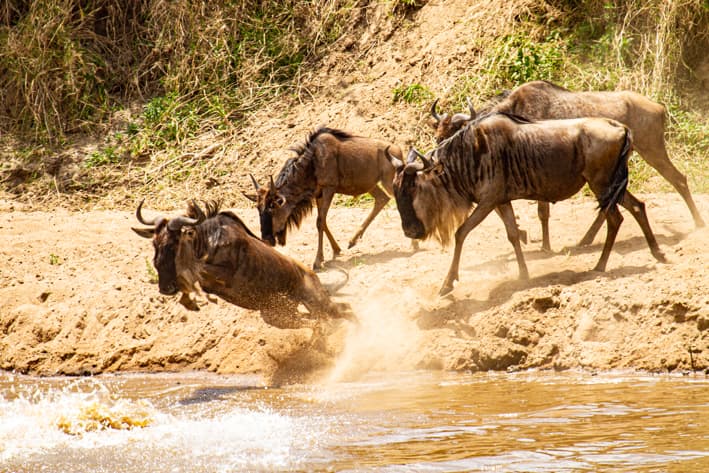
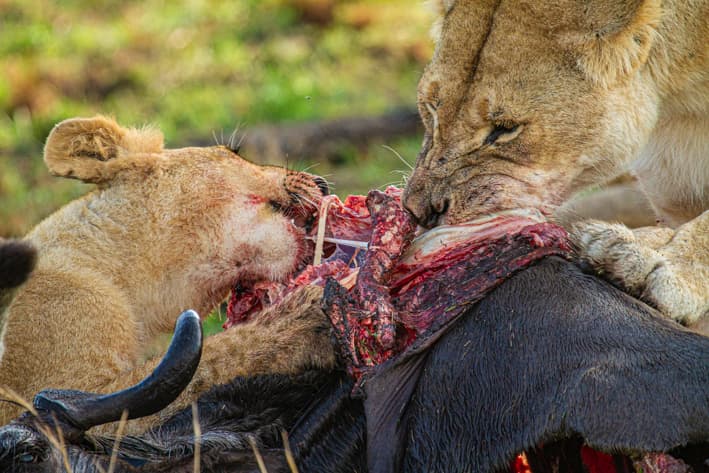
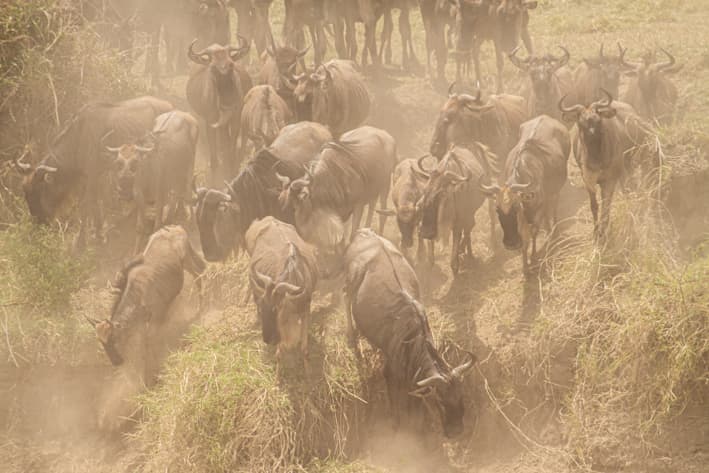

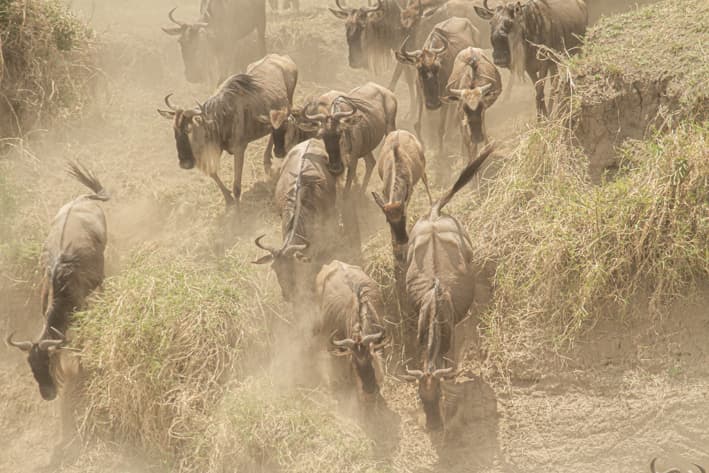
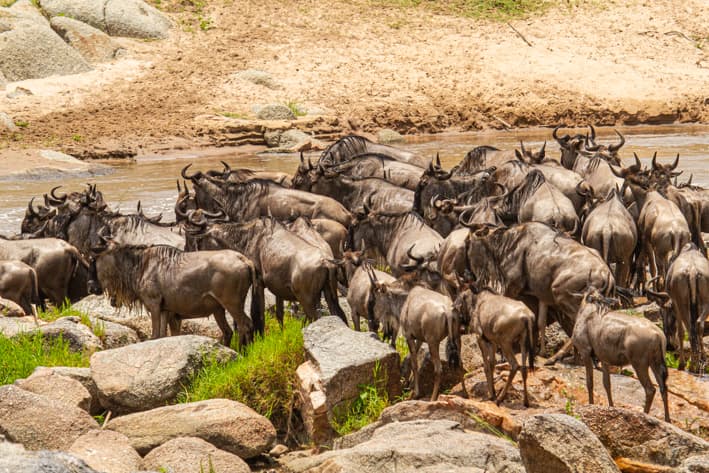
The Migration in December and January
By December, the herd is back in the Ndutu area. The short rains that happen over November and December have made it lush and green again, and so food is plentiful and the herd is comfortable as they prepare to give birth, and for the cycle to continue once again.
The sheer size of the herd means that during the migration, other animals like elephants, giraffe and plains game often retreat to quieter areas. Although the Great Wildebeest Migration is what makes them famous, safaris to Tanzania and Kenya offer so much more than that. Other animals are plentiful, and the area is home to many luxury safari lodges that allow visitors a truly bespoke safari experience.
If a migration safari tickles your fancy, get in touch to see what we can organise for you!

